As the temperatures drop during the winter months, it’s crucial to take preventive measures to protect your plumbing system from the dangers of freezing pipes. Frozen pipes can lead to costly repairs and extensive water damage. This blog post will provide essential winter plumbing tips to help safeguard your pipes and ensure a smooth and worry-free season. Following these preventive measures can avoid the inconvenience and expense of dealing with frozen or burst pipes.
Insulate Exposed Pipes
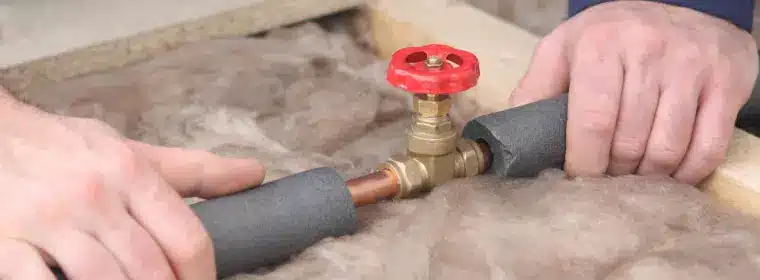
Insulating exposed pipes is crucial in protecting them from freezing during winter. Exposed pipes in unheated areas, such as crawl spaces, attics, basements, and garages, are particularly vulnerable to freezing. Insulation helps to maintain consistent temperatures and prevent heat loss, reducing the risk of frozen pipes. Here are some key points to consider when insulating exposed pipes:
Choose the Right Insulation:
Several types of insulation materials are available for pipe insulation, including foam sleeves, fibreglass, and rubber insulation tape. Foam pipe insulation sleeves are commonly used and are readily available at hardware stores. Ensure that the insulation material suits the pipe diameter and is easy to install.
Measure and Cut:
Before installation, measure the length of the pipe to determine the amount of insulation required. Cut the insulation to the appropriate length using a utility knife or scissors. Ensure the insulation fits snugly around the pipe without gaps or exposed areas.
Seal the Ends:
Seal the ends once the insulation is in place to provide complete coverage. Many insulation sleeves come with self-sealing adhesive strips or tape that can be used to secure the ends. If the insulation doesn’t have built-in sealing, use high-quality duct tape or insulation tape to secure the ends and prevent air leakage.
Pay Attention to Corners and Bends:
Insulate all areas of the exposed pipe, paying extra attention to corners, bends, and joints. These areas are more susceptible to cold air infiltration. Ensure that the insulation fully covers these vulnerable spots to maintain a consistent temperature along the entire length of the pipe.
Consider Heat Trace Tape:
Consider using heat trace tape and insulation in extremely cold climates or for pipes prone to freezing. Heat trace tape is an electrically heated wire that can be wrapped around the pipe to provide additional heat and prevent freezing. Follow the instructions from residential plumber Melbourne for properly installing and using heat trace tape.
Check for Damaged or Worn Insulation:
Regularly inspect the insulation on your pipes to ensure it is intact and in good condition. Over time, insulation may become damaged or worn out, reducing its effectiveness. Replace any insulation that shows signs of wear or damage to maintain optimal insulation performance.
Properly insulating exposed pipes creates a barrier between the cold air and the pipes, reducing the risk of freezing. This simple and cost-effective preventive measure can save you from the inconvenience and expense of dealing with frozen or burst pipes. Insulation protects your plumbing system and helps conserve energy by minimising heat loss. Take the time to insulate your exposed pipes before the onset of winter, and enjoy the peace of mind that comes with a well-protected plumbing system.
Seal Drafts and Cracks
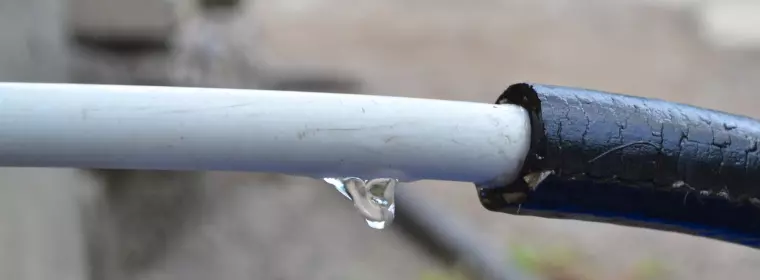
Sealing drafts and cracks in your home protects your plumbing system from freezing during winter. Cold air entering through gaps and openings can expose your pipes to low temperatures, increasing the risk of freezing. By identifying and sealing these drafts and cracks, you create a barrier that prevents cold air from reaching your plumbing and helps maintain a consistent temperature. Here are some key points to consider when sealing drafts and cracks:
Conduct a Thorough Inspection:
Start by carefully inspecting your home for any areas where cold air may enter. Common trouble spots include gaps around windows and doors, cracks in the foundation, and openings around utility penetrations. Use a flashlight and feel for any drafts or cold air currents.
Weatherstripping:
Weatherstripping is an effective way to seal gaps around windows and doors. Choose the appropriate type of weatherstripping based on the specific gap or opening you need to seal. Self-adhesive weatherstripping tapes or strips are easy to apply and can provide a tight seal.
Caulking:
Use caulk to seal cracks and gaps in the foundation, walls, and other areas where air may leak. Silicone-based caulking is generally more durable and provides better flexibility in cold temperatures. Fill in any visible cracks or gaps using a caulk gun, and smooth the surface with a caulk smoothing tool or your finger.
Insulate Electrical and Plumbing Penetrations:
Check for gaps in electrical outlets, light switches, and plumbing penetrations. These areas are common entry points for drafts. Install foam gaskets behind the outlet and switch plates, and use expanding foam or caulking to seal around plumbing penetrations.
Inspect Attic and Crawl Spaces:
Inspect your attic and crawl spaces for openings or gaps, allowing cold air to enter your home. Seal these areas with weatherstripping or foam insulation, paying special attention to areas where pipes may pass through.
Maintain Exterior Seals:
Ensure that exterior seals, such as door sweeps and thresholds, are in good condition and effectively seal the gap between the door and the floor. Replace worn-out seals to maintain an airtight seal.
Sealing drafts and cracks in your home creates a more energy-efficient and comfortable environment while protecting your plumbing system from freezing. This proactive measure helps maintain a consistent temperature and reduces the risk of frozen pipes. Spend some time before winter inspecting and sealing these openings, and enjoy peace of mind with a well-sealed and protected home.
Keep Interior Temperatures Consistent
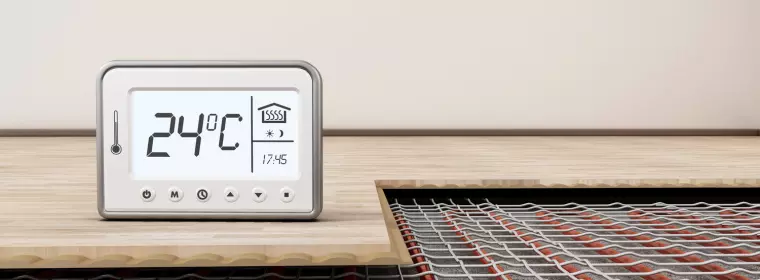
Maintaining consistent temperatures inside your home prevents frozen pipes during the winter months. Sudden temperature drops can put your plumbing system at risk, as the cold air can cause pipes to freeze and potentially burst. By keeping the interior temperatures consistent, you create a stable environment that helps protect your pipes. Here are some key points to consider when it comes to maintaining consistent interior temperatures:
Set a Minimum Temperature:
During the winter, it’s important to set your thermostat to a minimum temperature that ensures your pipes remain above freezing. Aim for a temperature of at least 55 degrees Fahrenheit (12 degrees Celsius) or higher, even when you’re away from home. This may require adjusting your thermostat settings or utilising a programmable thermostat that allows you to schedule temperature changes throughout the day.
Avoid Drastic Temperature Fluctuations:
Avoid drastic temperature fluctuations within your home, as rapid changes in temperature can stress your plumbing system. While it may be tempting to lower the temperature significantly during the day or while you’re sleeping to save on heating costs, it can increase the risk of frozen pipes. Instead, maintain a consistent temperature throughout the day, especially during extremely cold weather.
Utilise Zoned Heating:
If your home has a zoned heating system, take advantage of it to maintain consistent temperatures. Zoned heating allows you to control the temperature in different areas or zones of your home independently. This way, you can prioritise heating the areas where plumbing lines are located, ensuring they receive adequate warmth to prevent freezing.
Insulate Interior Walls:
Insulating interior walls that contain plumbing lines can help maintain consistent temperatures around the pipes. This is particularly important for rooms located on exterior walls. Insulation provides an extra layer of protection and helps prevent heat loss, reducing the chances of freezing.
Use Space Heaters Strategically:
If certain areas of your home are colder than others or have exposed pipes, consider using space heaters to provide additional warmth. Place the space heaters near the pipes or in the plumbing lines’ rooms to help maintain a consistent temperature. However, it’s essential to follow safety guidelines when using space heaters and never leave them unattended.
Properly Insulate Doors and Windows:
Insulating doors and windows helps prevent drafts and heat loss. Ensure that weatherstripping is installed properly and seals any gaps or cracks. Additionally, consider using insulated curtains or blinds to reduce heat transfer and maintain a more consistent temperature.
Keeping your home’s interior temperatures consistent creates a stable environment that helps protect your plumbing system from freezing. Implementing these measures can save you from the inconvenience and costly repairs associated with frozen or burst pipes. Take the necessary steps to maintain a warm and consistent environment throughout your home during winter.
Allow Faucets to Drip
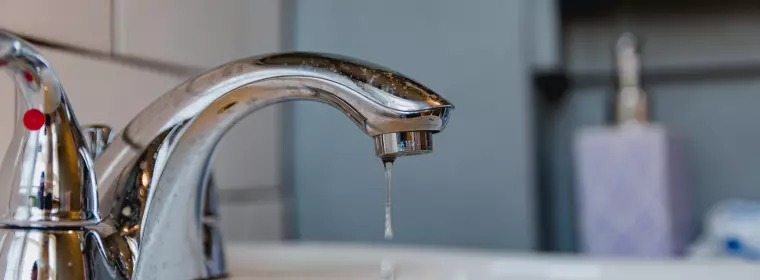
During periods of extremely cold weather, allowing faucets to drip can be an effective strategy to prevent pipes from freezing. Moving water is less likely to freeze compared to stagnant water. Allowing a slow drip of hot and cold water relieves pressure inside the pipes and reduces the likelihood of freezing. Here are some key points to consider when allowing faucets to drip:
Exterior Walls and Unheated Areas:
Pay special attention to faucets on exterior walls or in unheated areas such as basements, garages, or crawl spaces. These areas are more susceptible to freezing due to exposure to cold temperatures.
Both Hot and Cold Water:
It’s important to allow both hot and cold water to drip. Running only hot water may lead to increased energy consumption. The combination of hot and cold water drips helps maintain a temperature balance within the pipes.
Maintain a Slow Drip:
The purpose of allowing faucets to drip is to create a steady flow of water. The drip should be slow enough to prevent water wastage, usually just a few drops per minute.
Monitor Water Flow:
Regularly check the faucets to ensure that the water is flowing steadily. If you notice any decrease or cessation of water flow, it could be a sign of freezing or a potential blockage. Take immediate action to address the issue.
Remember, allowing faucets to drip should be used temporarily during extreme cold weather. It can provide added protection but is not a foolproof method to prevent frozen pipes. If you have concerns about your plumbing system or are experiencing issues with freezing pipes, it’s best to consult a professional plumber for guidance and assistance.
Disconnect and Drain Outdoor Hoses
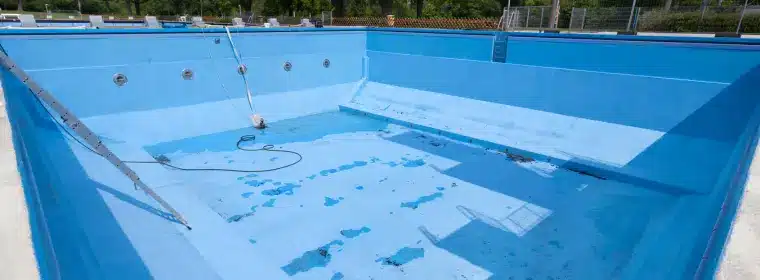
As winter approaches, it’s essential to disconnect and drain outdoor hoses to prevent them from freezing and causing damage to your plumbing system. When water freezes inside a connected hose, it can expand and pressure the faucets and pipes it’s attached to, leading to cracks or bursts. Here are some key points from a reputed plumber in Gladstone for disconnecting and draining outdoor hoses:
Turn Off the Water Supply:
Before disconnecting the hose, shut off the water supply from the indoor valve or faucet. This prevents any water from flowing into the hose during the disconnection process.
Detach the Hose:
Unscrew the hose from the outdoor faucet or spigot. Be gentle and avoid twisting or pulling too forcefully, as this can damage the faucet or pipe.
Drain the Hose:
Holding one end of the hose, walk its length while applying slight pressure to push out any remaining water. Ensure that both ends of the hose are fully drained.
Store the Hose Properly:
Once the hose is drained, coil it neatly and store it in a dry and protected area, such as a shed or garage. This helps prevent any residual moisture from freezing and damaging the hose.
Close Outdoor Faucets:
After disconnecting the hose, close the outdoor faucets or spigots tightly to prevent any water lingering in the pipes connected to them.
By disconnecting and draining outdoor hoses, you eliminate the risk of frozen water causing damage to your plumbing system. Taking these simple steps before winter sets in can save you from the inconvenience and expense of dealing with burst pipes and potential water damage.
Open Cabinet Doors
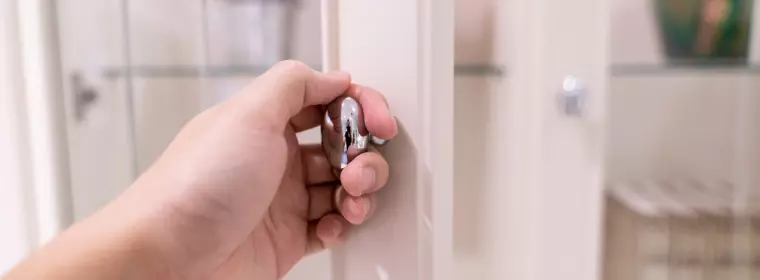
Opening cabinet doors is a simple yet effective way to prevent pipes within cabinets from freezing during winter. Allowing warm air from your home to circulate the pipes can help maintain a higher temperature and reduce the risk of freezing. Here are some key points to consider when opening cabinet doors:
Target Under-Sink Cabinets:
Focus on opening the cabinet doors under sinks, especially on exterior walls or unheated areas. These areas are more prone to cold air infiltration, putting the pipes at a higher risk of freezing.
Keep Doors Open:
Ensure that the cabinet doors are opened wide to facilitate the unrestricted flow of warm air around the pipes. Ensure adequate space for air circulation and that the doors do not obstruct the heat flow from your home’s interior.
Monitor Interior Temperatures:
Keeping the cabinet doors open allows warm air from your home to reach the pipes. Maintaining consistent interior temperatures throughout your home is important to prevent frozen pipes effectively.
Close Cabinets Securely:
While keeping cabinet doors open for improved air circulation is necessary, close them securely when you are done accessing the cabinet contents. This prevents any accidental spills or potential hazards.
Opening cabinet doors is a simple and cost-effective method to help protect your pipes from freezing. Allowing warm air to reach the pipes creates a more favourable environment and reduces the risk of frozen pipes. Incorporate this practice into your winter plumbing maintenance routine to ensure the well-being of your plumbing system.
Be Prepared for Extended Absences
If you plan to be away from your home for an extended period during winter, taking additional precautions to protect your pipes is crucial. Consider draining the water system by shutting off the main water supply and opening all faucets to allow the water to drain completely. This includes flushing toilets and running the dishwasher and washing machine to remove any remaining water. Alternatively, you can enlist the help of a trusted neighbour or hire a professional to periodically check your home and ensure the heating system is functioning correctly.
Conclusion
Following these winter plumbing tips, you can proactively protect your pipes from freezing and avoid the headaches and expenses associated with burst pipes. Remember to insulate exposed pipes, seal drafts and cracks, maintain consistent interior temperatures, allow faucets to drip, disconnect and drain outdoor hoses, open cabinet doors, and be prepared for extended absences. These preventive measures allow you to enjoy a worry-free winter season while safeguarding your plumbing system.
Remember, if you encounter any plumbing issues or need professional assistance, it’s always recommended to contact a licensed plumber like MJV Plumbing Services Pty Ltd, who can provide expert guidance and help resolve any problems effectively. Stay proactive, stay warm, and protect your plumbing system this winter!
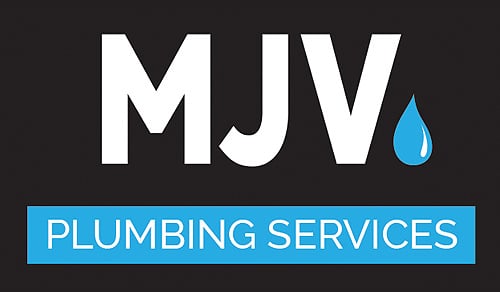
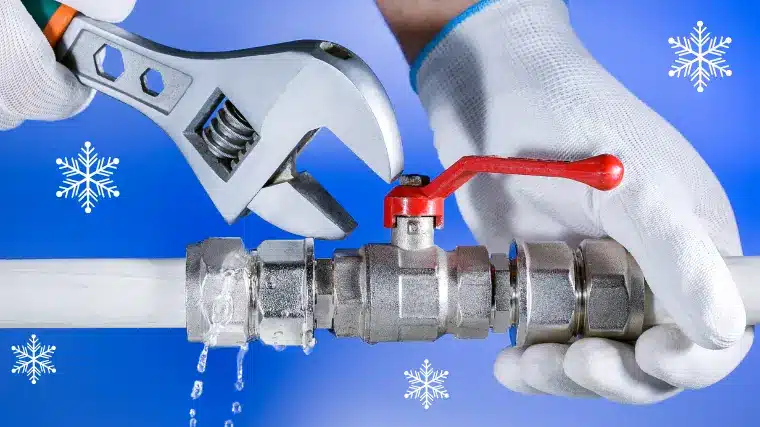
Add Comment